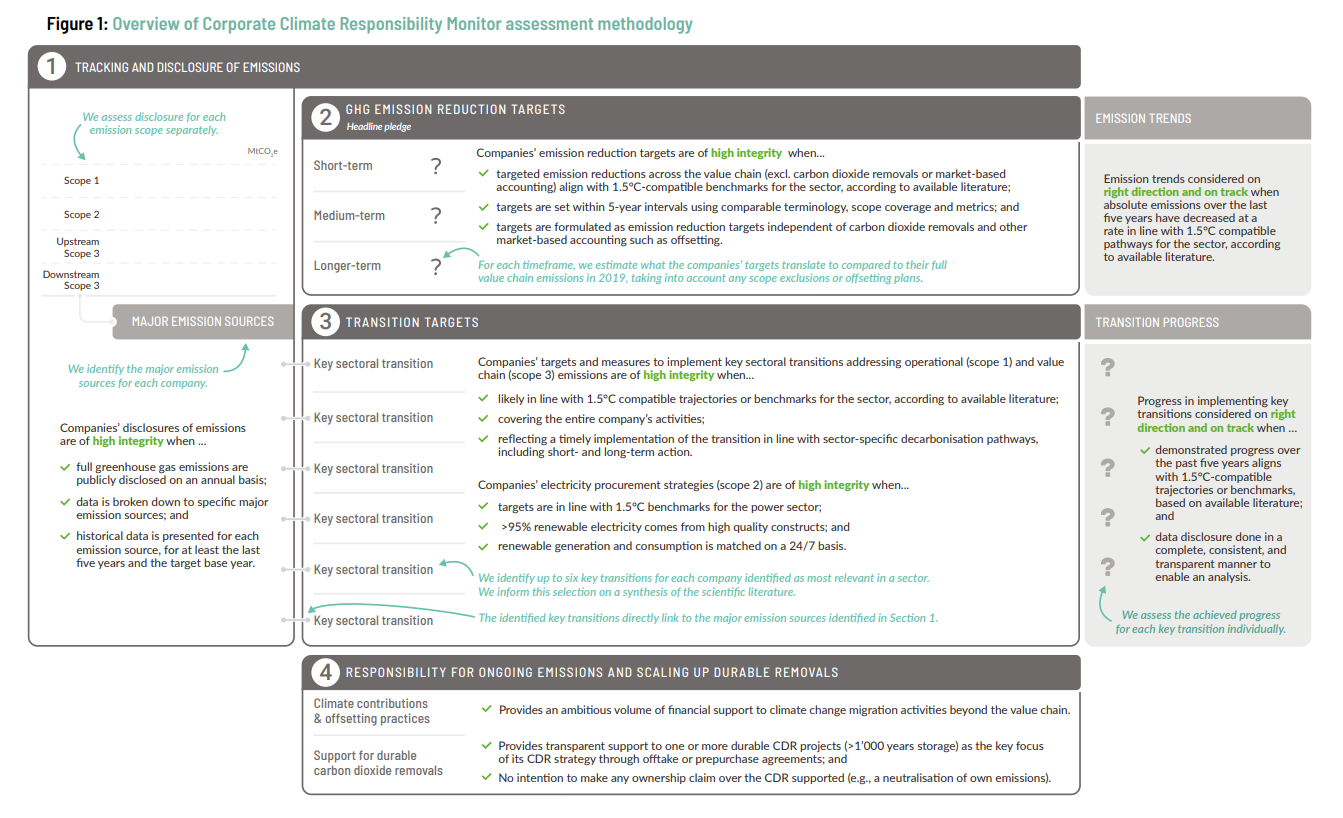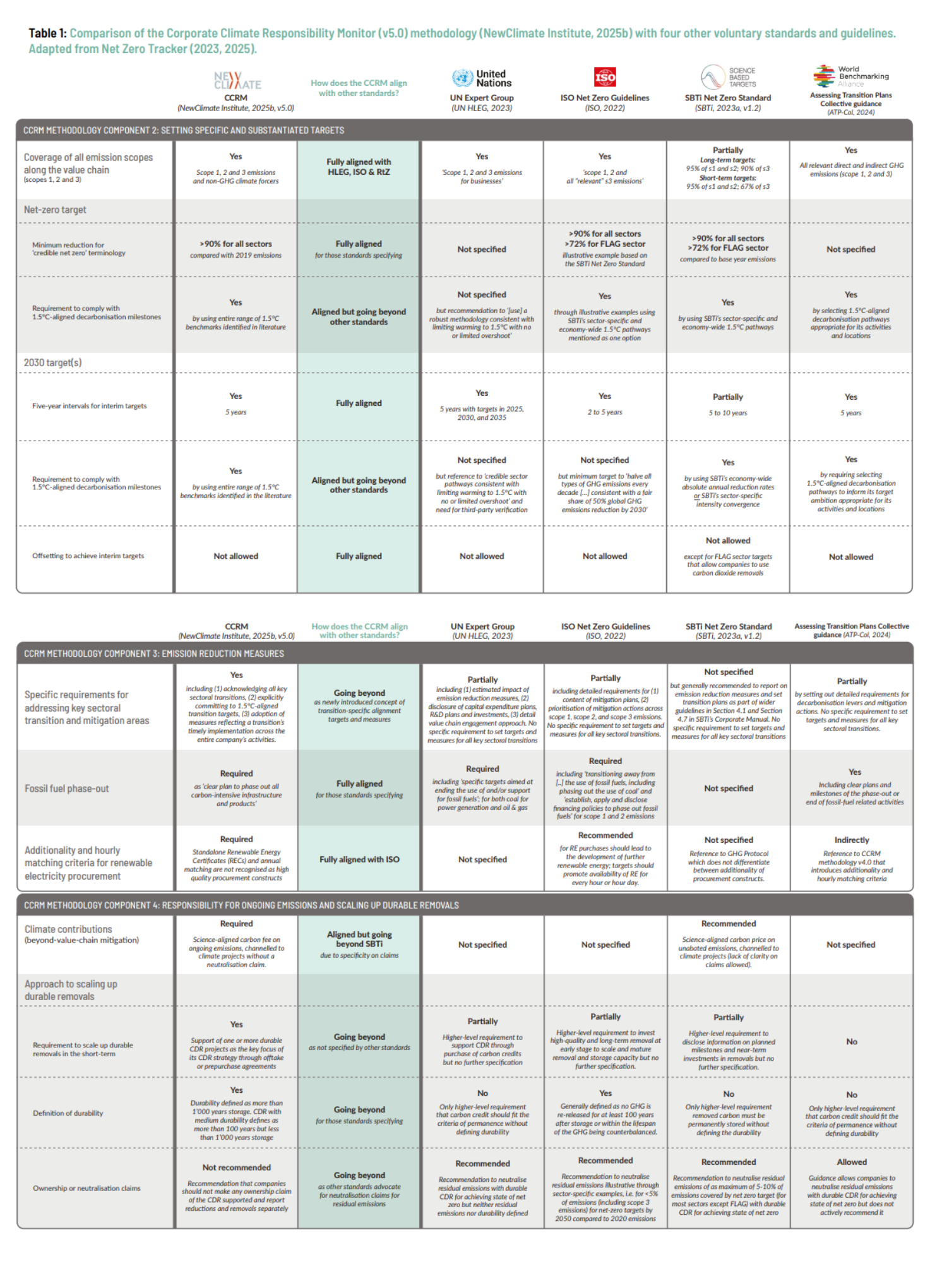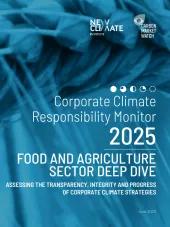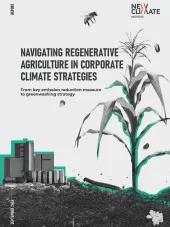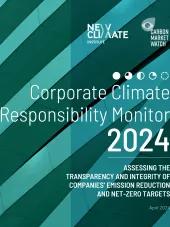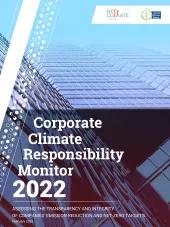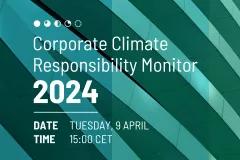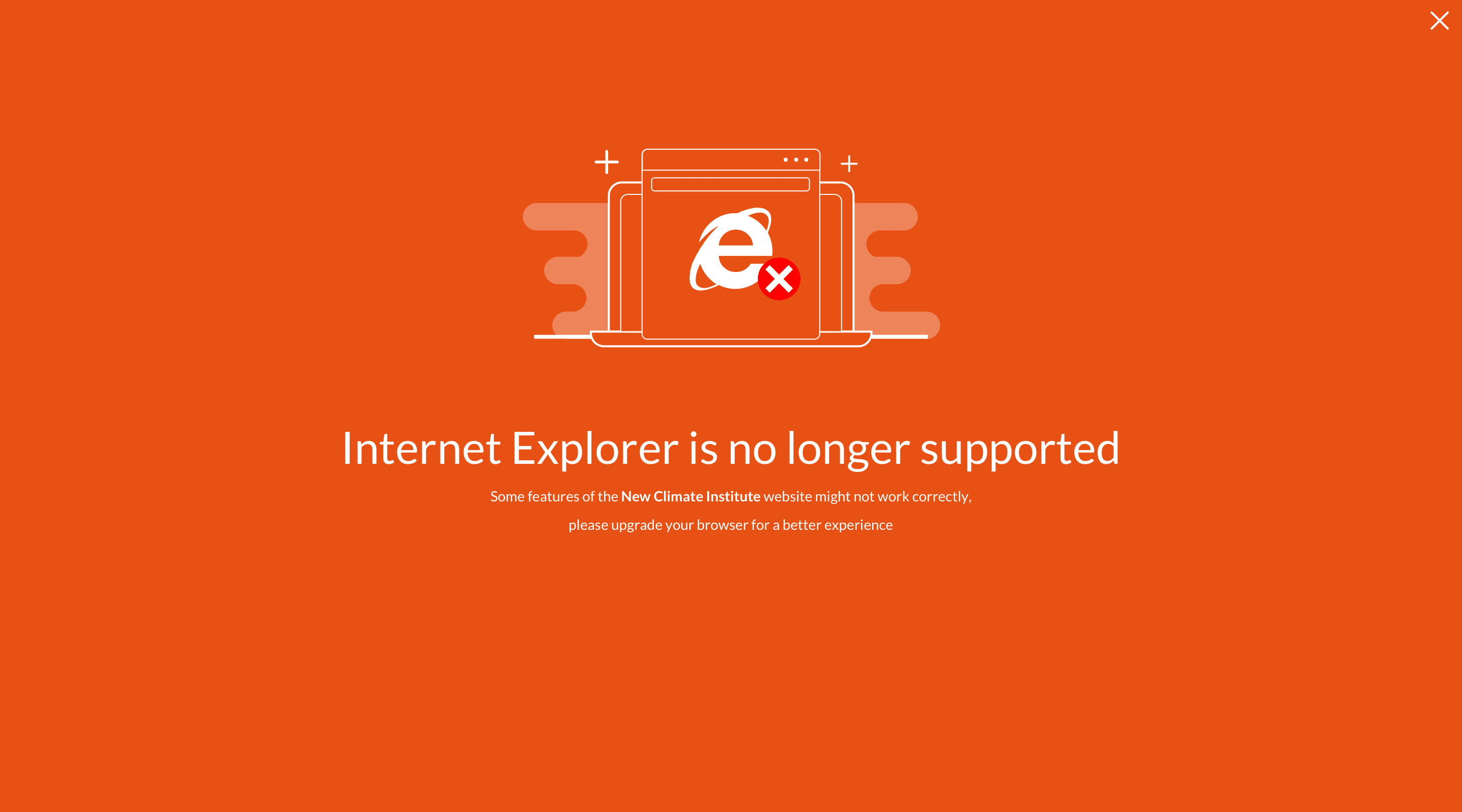The Corporate Climate Responsibility Monitor (CCRM) methodology provides an assessment framework to evaluate the transparency and integrity of corporate climate strategies. The methodology enables users such as researchers, civil society, investors or courts to assess the robustness of corporate climate claims and companies to inform their development of transparent and high-integrity climate strategies.
The methodology focuses on four key assessment areas
- Tracking and disclosure of emissions
- Setting specific and substantiated targets
- Implementing key sectoral transitions
- Responsibility for ongoing emissions and scaling up durable removals.
The framework’s stepwise assessment approach allows to identify good practice and critical gaps in companies’ climate strategies. The methodology is applicable across sectors and geographies. Users can adapt the methodology to assess or improve corporate climate strategies for research, advocacy or other purposes.
The CCRM methodology closely aligns with the converging guidance of other major initiatives, including the UN High Level Expert Group on Net Zero Targets and the ISO Net Zero Guidelines, as shown in the table below.
Key changes in v5.0 compared to previous versions
The 2025 Corporate Climate Responsibility Monitor methodology (v5.0) includes several changes and updates compared to the previous methodology (v4.0) of June 2024.
The overall scoring now places greater emphasis on the integrity of targets and implementation of key sectoral transitions, with revised weightings across the four core sections. While Sections 1 and 2 remain unchanged in structure and scoring, new weightings have been introduced in Sections 3 and 4 to reflect updated assessment methods and improved indicator definitions.
-
Section 1 | Tracking and disclosure of emissions
Minor updates were made to enhance transparency and integrity criteria, including requirements for historical emissions time series. The scope 2 accounting guidance was refined to better distinguish between hourly and annual matching in market-based versus location-based approaches. -
Section 2 | Setting emission reduction targets:
No major methodological changes were made to this section. However, a new standalone progress assessment was introduced to track corporate emission trends over the past five years. -
Section 3 | Implementing key sectoral transitions:
This section underwent a full methodological revision. The revised approach applies a new assessment approach to evaluate the transparency and integrity of companies’ transition-specific alignment targets for key sectoral transitions. This includes a separate progress assessment for each of the key transitions. -
Section 4 | Responsibility for ongoing emissions and removals:
Major updates were introduced to reflect the latest scientific insights on responsibility for ongoing emissions and scaling up durable carbon dioxide removal. The revised approach draws directly from recent NewClimate Institute's research.

